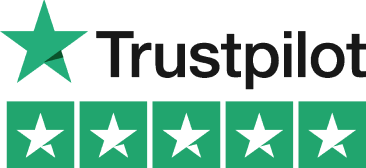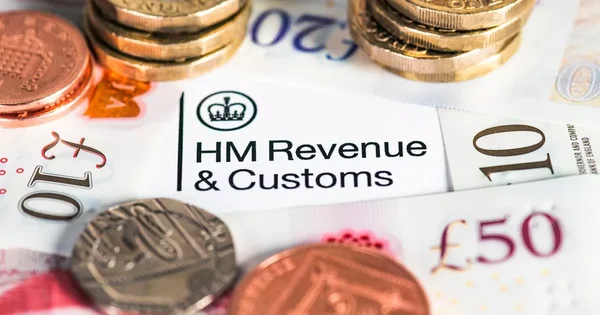Let’s Break This Down Together...
Making Tax Digital for Self Assessment is changing how you report income if you're self-employed or a landlord. No more once-a-year tax returns now it's about keeping records and reporting quarterly.
In this guide, we’ll walk you through who needs to comply, when it starts, what software you’ll need, and how to submit updates. We’ll also explain digital records, exemptions, and common questions.
By the end, you’ll know exactly what to do and how to stay ahead of the new rules without the stress. Let’s dive in!
What is Making Tax Digital for Self Assessment?
Making Tax Digital for Self Assessment (MTD ITSA) is HMRC’s initiative to modernise the tax system for self-employed people and landlords. MTD ITSA is part of Making Tax Digital (MTD), the government-mandated digital reporting system for income tax.
It moves away from the traditional annual tax return toward regular digital reporting. Some taxpayers have been able to participate in Making Tax Digital for Income Tax voluntarily since 2018, before it becomes mandatory.
Instead of scrambling to complete your Self Assessment once a year, you’ll keep digital records and send HMRC quarterly updates. This approach covers your income and expenses throughout the year.
The goal is to make tax more accurate and efficient. It gives you a clearer picture of your tax situation throughout the year rather than just at year-end.
How Making Tax Digital Self Assessment Works
The system requires you to keep digital records of your business transactions. You’ll submit tax information to HMRC every three months using compatible software.
These quarterly updates aren’t full tax returns. They’re simpler summaries of your income and expenses that help HMRC build a real-time picture of your tax position.
At the end of the accounting period, you’ll submit a final declaration. Before submitting your final figures to HMRC, you may need to make accounting adjustments such as capital allowances or depreciation to ensure your taxable profits are accurate. This final declaration confirms your annual figures and includes any other income or tax reliefs.

Who Needs to Use MTD for Self Assessment?
MTD ITSA will affect self-employed individuals and landlords whose combined annual business or property income exceeds £10,000.
Your total gross income from all sources, such as self employment and property letting, is used to determine if you meet the threshold for MTD ITSA.
The rollout is happening in phases. From April 2026, sole traders and landlords with income above £50,000 must comply. From April 2027, those with income above £30,000 join the system. If you start new self employment during the tax year, you will need to consider when your income becomes reportable under MTD.
Later (date TBC), those with income between £10,000-£30,000 will be included. Limited companies aren’t part of MTD ITSA as they follow different tax rules.
To be exempt from MTD, you must meet certain criteria set by HMRC, such as digital exclusion or other qualifying conditions. If you’re below these thresholds or exempt, you can continue using the current Self Assessment system. HMRC will notify you when you need to make the switch.
When Do You Need to Start?
The timeline for MTD ITSA has been pushed back several times. This gives businesses more time to prepare for the changes ahead. With the new rules for Making Tax Digital coming into effect, it is important to understand the regulatory changes and start preparing now to ensure compliance.
If your income is above £50,000, you’ll need to comply from April 2026 for the 2026/27 tax year. For those with income between £30,000-£50,000, MTD becomes mandatory from April 2027.
You can sign up voluntarily before these dates if you want to get ahead of the change. HMRC will communicate directly with taxpayers as their start date approaches.
If you start a new business, the timing of your business start date will determine when you need to comply with MTD requirements.
I remember when the VAT version of MTD launched in 2019. Many of my colleagues panicked at the last minute, but those who prepared early found the transition much smoother.

What Software Will You Need?
You’ll need HMRC-compatible software to comply with MTD ITSA. It is important to choose appropriate software that is compatible with HMRC's systems and suitable for participating in the testing phase of MTD, ensuring you meet all eligibility requirements. This software must connect directly to HMRC’s systems for submitting your information.
You can even use spreadsheets with special “bridging” software to connect to HMRC. The key is finding a solution that matches your business complexity. The experience of VAT registered businesses during the initial rollout and testing phase can provide useful insights for those preparing for MTD ITSA.
The software you choose should make it easy to record transactions and categorise expenses. It should also simplify the submission of your quarterly updates.
Free and low-cost options will be available. These will particularly benefit taxpayers with straightforward financial affairs.
How Will Quarterly Reporting Work?
Under MTD, you'll submit four updates throughout the tax year. Quarter 1 covers 6 April to 5 July, due by 5 August. Quarter 2 spans 6 July to 5 October, due by 5 November.
Quarter 3 runs from 6 October to 5 January, due by 5 February. Quarter 4 covers 6 January to 5 April, due by 5 May.
These updates will include your income and expenses for that quarter. They'll be broken down into categories that match HMRC's reporting requirements.
After your fourth quarterly update, you'll submit an End of Period Statement. This finalises your business figures for the year.
Finally, you'll complete a Final Declaration that replaces the current tax return. This includes any other income sources and claims for reliefs or allowances.

What Records Must Be Kept Digitally?
You’ll need to keep records digitally to comply with Making Tax Digital (MTD) regulations. This means recording the date of each transaction and the amount of income received using digital software or apps.
Categories of expenses with dates and amounts need digital tracking. However, you don’t need to keep digital copies of receipts and invoices – just the transaction information. The records must be maintained in digital form throughout the process. If you transfer data between different programs, you’ll need to maintain “digital links”.
Records should be kept for at least five years after the 31 January submission deadline. This retention period ensures you can respond to any HMRC enquiries.
Exemptions from digital record-keeping may apply if you are a member of a religious society whose beliefs prevent the use of electronic records, or if you live in a remote location with limited internet access.
Digital Links: Connecting Your Records for MTD
Digital links are at the heart of Making Tax Digital for Income Tax, ensuring your digital records flow seamlessly from one system to another. Under the new MTD rules, if you’re a self employed individual, landlord, or sole trader with qualifying income above the income threshold, you’ll need to use digital links to connect your business records, accounting software, and any other digital tools you use to manage your tax affairs.
So, what exactly is a digital link? In simple terms, it’s an electronic connection that transfers your financial records such as income, expenses, and property income between different pieces of software or spreadsheets without manual copying or re-entry.
For example, if you use a cloud accounting package to track your business income and a separate spreadsheet for rental income, a digital link ensures that data moves directly between these systems. This reduces the risk of errors and helps you stay compliant with MTD for income tax. It also means your gross income, taxable profits, and other taxable income are always up to date and ready for submission to HMRC.
To meet MTD requirements, you’ll need to make sure your software provider supports digital links and that your chosen tools are MTD compliant. Many accounting software solutions now offer built-in digital links, making it easier to maintain digital records and submit quarterly updates. If you’re using spreadsheets, bridging software can help create the necessary digital connections to HMRC’s systems

From Panic to Plan: How MTD Can Simplify Your Tax Life
MTD for Self Assessment represents a significant shift in how you'll manage your tax affairs. It moves from annual to quarterly reporting, creating a more regular tax routine.
While it might seem like extra work initially, the regular updates could help you stay on top of your finances. Many find it helps avoid the annual tax return rush and last-minute stress. Many taxpayers who've already adopted digital record-keeping find it saves time overall. It often provides better insight into business performance throughout the year.
The key is to start preparing early. Choose your software, get comfortable with digital record-keeping, and you'll be ready when your MTD start date arrives.











